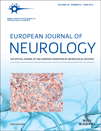Cerebrovascular complications during pregnancy and postpartum: clinical and prognosis observations in 240 Hispanic women
See editorial by Pat O'Brien and Dominic Heaney, on page 801.
Abstract
Background and purpose: Although pregnancy and postpartum have long been associated with stroke, there is a dearth of information in Latino-American populations. The aim of this study was to describe the cerebrovascular complications occurring during pregnancy/postpartum and compare the characteristics amongst stroke types occurring in this period in Hispanic women.
Patients and methods: We studied 240 women with cerebrovascular complications during pregnancy and the first 5 weeks postpartum, from our stroke registry. Patients were classified into three groups: cerebral venous thrombosis (CVT), ischaemic stroke (IS), and intracerebral hemorrhage (ICH). For each group, clinical data, timing of the event, and outcome were analyzed.
Results: Of the 240 women, 136 had CVT (56.7%), 64 IS (26.7%), and 40 ICH (16.6%). In 72 women (30%), the event occurred during pregnancy, in 153 (64%) during postpartum, and in 15 (6%) closely related to labor. CVT was more common in the first trimester of pregnancy and in the second and third weeks following delivery; whilst IS and ICH were seen mainly during pregnancy and the first 2 weeks following delivery. Pre-eclampsia/eclampsia was more common in patients with ICH (57.5%) and IS (36%) than in those with CVT (9.6%) (P < 0.001). An excellent recovery (modified Rankin Scale: 0–1) was observed amongst women with CVT (64%) and IS (50%) compared to ICH (32%), (P = 0.004).
Conclusions: Pre-eclampsia/eclampsia is a frequent risk factor in patients with ICH and IS, but not in CVT. Stroke types clustered different within the pregnancy-postpartum period. A good prognosis is observed in patients with CVT.




